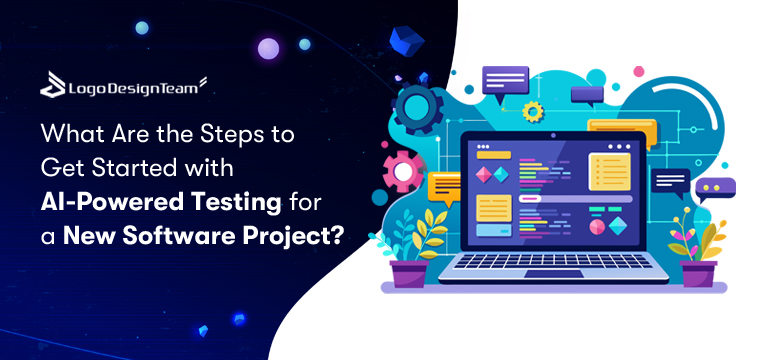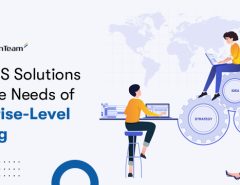AI-powered testing is revolutionizing software quality assurance. As companies seek to enhance efficiency and accuracy in their development processes, integrating AI into testing workflows has become a crucial step. To get started with AI-powered testing for a new software project, teams should first identify suitable AI testing solutions and align them with project goals.
Implementing AI-powered testing begins with a thorough assessment of the project’s requirements and existing testing infrastructure. Teams need to evaluate their current testing practices and determine areas where AI can provide the most significant improvements. This may involve analyzing test coverage, identifying repetitive tasks, and pinpointing bottlenecks in the testing process.
Once the groundwork is laid, the next step is to select and integrate appropriate AI testing tools. These solutions can range from automated test case generation to intelligent test execution and results analysis. By leveraging AI testing solutions, teams can enhance their testing capabilities and uncover defects that traditional methods might miss.
Key Takeaways
- Assess project requirements and current testing practices before implementing AI-powered testing
- Select AI testing tools that align with specific project goals and existing infrastructure
- Integrate AI solutions gradually to optimize efficiency and accuracy in software testing processes
Preparing for AI-Powered Testing in Software Projects
Implementing AI-powered testing in software projects requires careful planning and preparation. The following steps outline key considerations for successfully integrating AI into your testing processes.
Evaluating Project Requirements for AI Testing
Assess the project’s scope, complexity, and timeline to determine if AI testing is suitable. Identify specific testing areas where AI can provide the most value, such as regression testing or performance testing. Consider the volume and variety of test data needed for AI algorithms to learn effectively.
Evaluate the team’s skillset and determine if additional training is necessary. AI testing often requires expertise in data science and machine learning. AI testing needs a lot of properly labeled data to work well. Annotation services can help sort and label the data, like marking objects in images for an app. This makes sure the AI learns the right way and catches issues more accurately.
Review existing test cases and determine which can be adapted for AI-powered testing. This process may involve restructuring test scripts to work with AI algorithms.
Selecting the Right AI-Powered Testing Tools
Research available AI testing tools that align with project requirements. Compare features such as test case generation, self-healing capabilities, and integration with existing development environments.
Evaluate each tool’s learning curve and compatibility with the team’s skill level. Assess the tool’s ability to handle the project’s expected test data volume and complexity. Check for integration capabilities with current CI/CD pipelines and version control systems.
Consider scalability and long-term cost implications. Some AI tools may require significant computational resources as test suites grow. Look for tools that offer flexible pricing models to accommodate project scaling.
Setting Up Testing Environments and Infrastructure
Prepare robust testing environments that can support AI-powered tools. This may involve setting up dedicated servers or cloud infrastructure to handle increased computational demands. Ensure network capacity can handle the data transfer requirements of AI testing processes.
Configure version control systems to manage AI-generated test cases and results effectively. Set up data pipelines to feed AI algorithms with relevant test data. This may include creating synthetic data generation processes to expand test coverage.
Implement security measures to protect sensitive test data used in AI processes. This might involve data anonymization techniques or access controls. Establish monitoring systems to track AI testing performance and resource usage.
Create documentation and guidelines for using AI testing tools within the project. This should include best practices for creating and maintaining AI-powered tests.
Implementing and Executing AI-Powered Test Cases
AI-powered testing AI-powered testing transforms how software teams approach quality assurance. This advanced approach leverages machine learning and automation to enhance test coverage, speed, and accuracy.
Designing and Generating AI-Enhanced Test Cases
AI algorithms analyze application code, user flows, and historical test data to generate comprehensive test cases. This process starts by feeding the AI system with project requirements, user stories, and existing test scenarios. The AI then identifies critical paths, edge cases, and potential vulnerabilities.
Machine learning models continuously refine test case generation based on feedback and results. This adaptive approach ensures test cases evolve with the software, maintaining relevance and effectiveness. AI-generated test cases often uncover scenarios human testers might overlook, improving overall test coverage.
Teams can customize AI-generated test cases to align with specific project needs and quality standards. This hybrid approach combines AI efficiency with human expertise for optimal results.
Optimizing Testing Processes for Improved Coverage and Speed
AI-powered testing significantly accelerates test execution and analysis. Automated test runners execute large numbers of test cases simultaneously across various environments and configurations. This parallel processing capability dramatically reduces testing time compared to manual methods.
AI algorithms prioritize test cases based on risk, impact, and historical data. This intelligent scheduling ensures critical tests run first, providing faster feedback on core functionality. Machine learning models analyze test results in real-time, quickly identifying patterns and potential issues.
Self-healing test scripts automatically adjust to minor UI changes, reducing maintenance overhead. This adaptability keeps tests running smoothly even as the application evolves, saving time and resources.
Monitoring and Maintaining Test Stability and Accuracy
Continuous monitoring is crucial for maintaining the effectiveness of AI-powered testing. Machine learning models track test performance metrics, identifying unstable or flaky tests. AI algorithms analyze failure patterns, suggesting optimizations or flagging tests that require human review.
Visual AI compares application screenshots across test runs, detecting unintended visual changes. This approach catches UI regressions that traditional functional tests might miss. Natural language processing enhances test result analysis, providing clear, actionable insights to development teams.
Regular model retraining ensures AI systems stay aligned with evolving software and testing needs. This ongoing refinement process improves test accuracy and relevance over time. Teams should establish feedback loops between AI systems and human testers to validate and improve AI-generated test cases continuously.
Conclusion
AI-powered testing offers tremendous potential for new software projects. By leveraging machine learning and automation, teams can generate comprehensive test cases, improve test coverage, and accelerate the quality assurance process. Getting started involves selecting the right AI testing tools, integrating them into existing workflows, and training team members on their effective use.
With proper implementation, AI testing can significantly enhance software quality while reducing manual effort. As the technology continues to evolve, organizations that embrace AI-powered testing will be well-positioned to deliver higher-quality software more efficiently.




